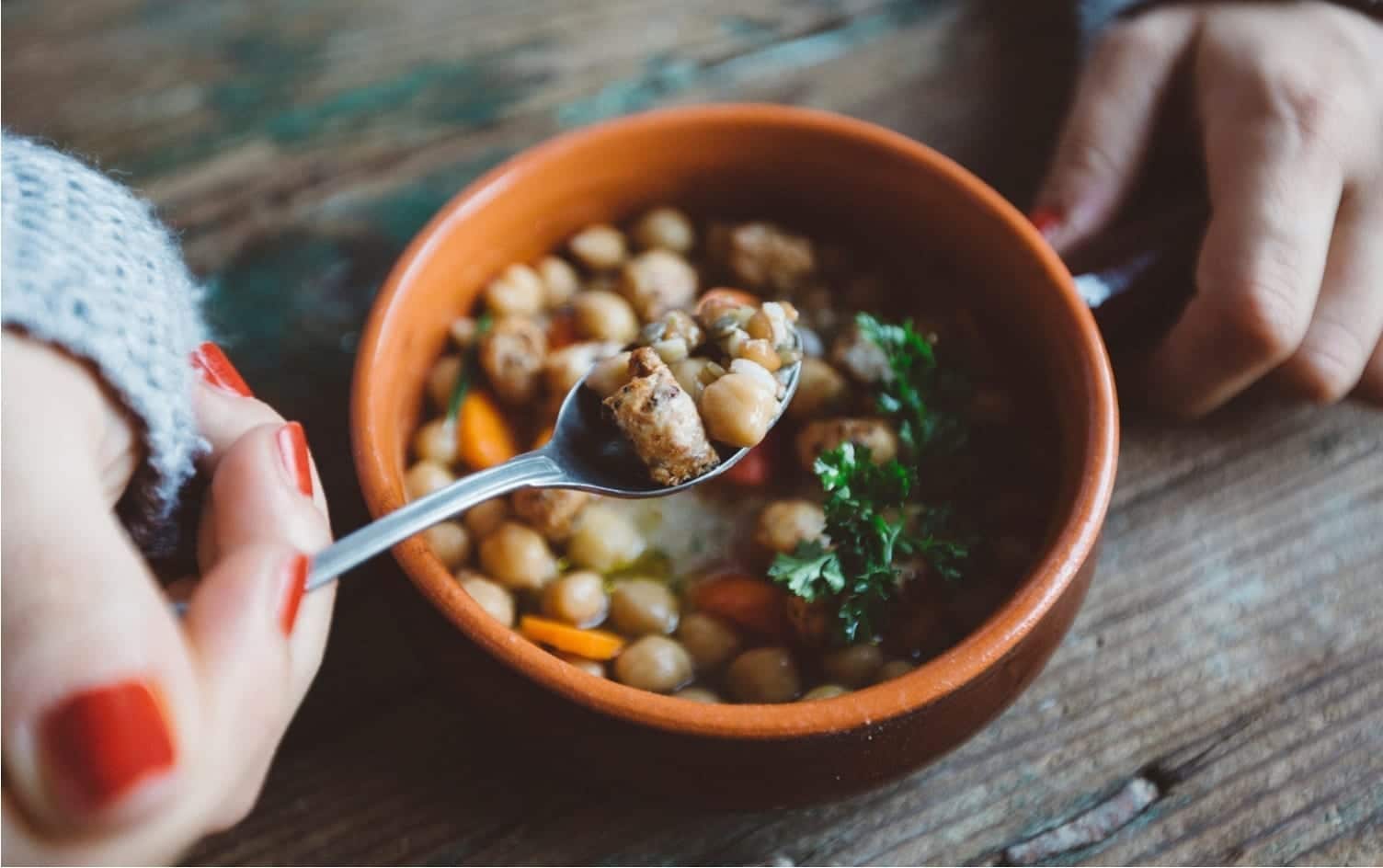When the weather cools off, you might be inclined to eat more soup. Not only is it warm and comforting but it can also be super nutritious, especially if it’s filled with low-calorie, fiber-rich vegetables. It also has another big perk: Soup may aid your weight-loss efforts, because it is hydrating and helps you to feel satisfied, preventing overeating.
THE SCIENCE
Researchers found when you start your lunch with a serving of low energy-dense (Read: low-calorie) soup, such as chicken broth filled with vegetables, you’ll eat 20% fewer calories than usual at lunch, and then you’ll eat the normal amount throughout the rest of your day, rather than feeling ravenous and trying to make up for the missed lunchtime calories. Over the long term, eating 20% fewer calories at lunch every day can lead to weight loss.
“You just tend to eat the same amount for dinner, [because] soup is a really satisfying food,” says study author Barbara Rolls, PhD, a professor and director of the Laboratory for the Study of Human Ingestive Behavior at Penn State University. “If you compare [calories in] soup, for example, to crackers, you’re going to get a much bigger portion of soup than you do of the crackers, because of the calorie density. Water gives you volume, weight and no additional calories, so water-rich foods give you a bigger bang for your buck.”
WHY SOUP IS MORE EFFECTIVE THAN A GLASS OF WATER
To feel satisfied, the water needs to be cooked into the soup; you won’t get the same result from drinking a glass of water. That’s because soup provides numerous satiating signals:
- Seeing a full bowl helps you recognize you’ll be enjoying a large amount of food.
- The smell and taste contribute to satisfaction levels.
- When it reaches your stomach, the volume stretches your stomach, which helps to release satiety hormones, indicating fullness.
HOW TO TAKE ADVANTAGE OF SOUP TO HELP WITH WEIGHT LOSS
“Broth-based and clear soups are best as a first course, since they tend to be lower in calories than cream-based soups, chowders and pureed soups,” says Sofia Norton, RD. “Egg drop soup is a good example of a broth-based soup that’s low in calories, with roughly 66 per cup (150g). A bowl of Panera’s potato soup, on the other hand, has 350 calories.” Look for something that’s “higher in fiber and contains lean protein, which is the best combination to enhance satiety,” adds Rolls.
If you do opt for chowders, bisques and cream-based soups, “[They should be] eaten as main courses,” says Norton. If it’s your main course, “look for one with at least 10 grams of protein,” recommends Diana Gariglio-Clelland, RD. “Bean-based soups are a great option because they’re high in fiber and protein,” she says.
It’s also important to be mindful of sodium levels. There’s often a fair amount of salt added to homemade recipes, and many canned soups are high in sodium, too. Consider replacing some of the salt in your soup recipes with pepper or other spices. “If you do choose a prepared soup, try to pick one with less than 20% of the daily value for sodium per serving,” Gariglio-Clelland says. “[Keep in mind that] many cans contain more than one serving, so the sodium amount increases based on how much you consume.” You can also track your sodium intake on an app like MyFitnessPal.




